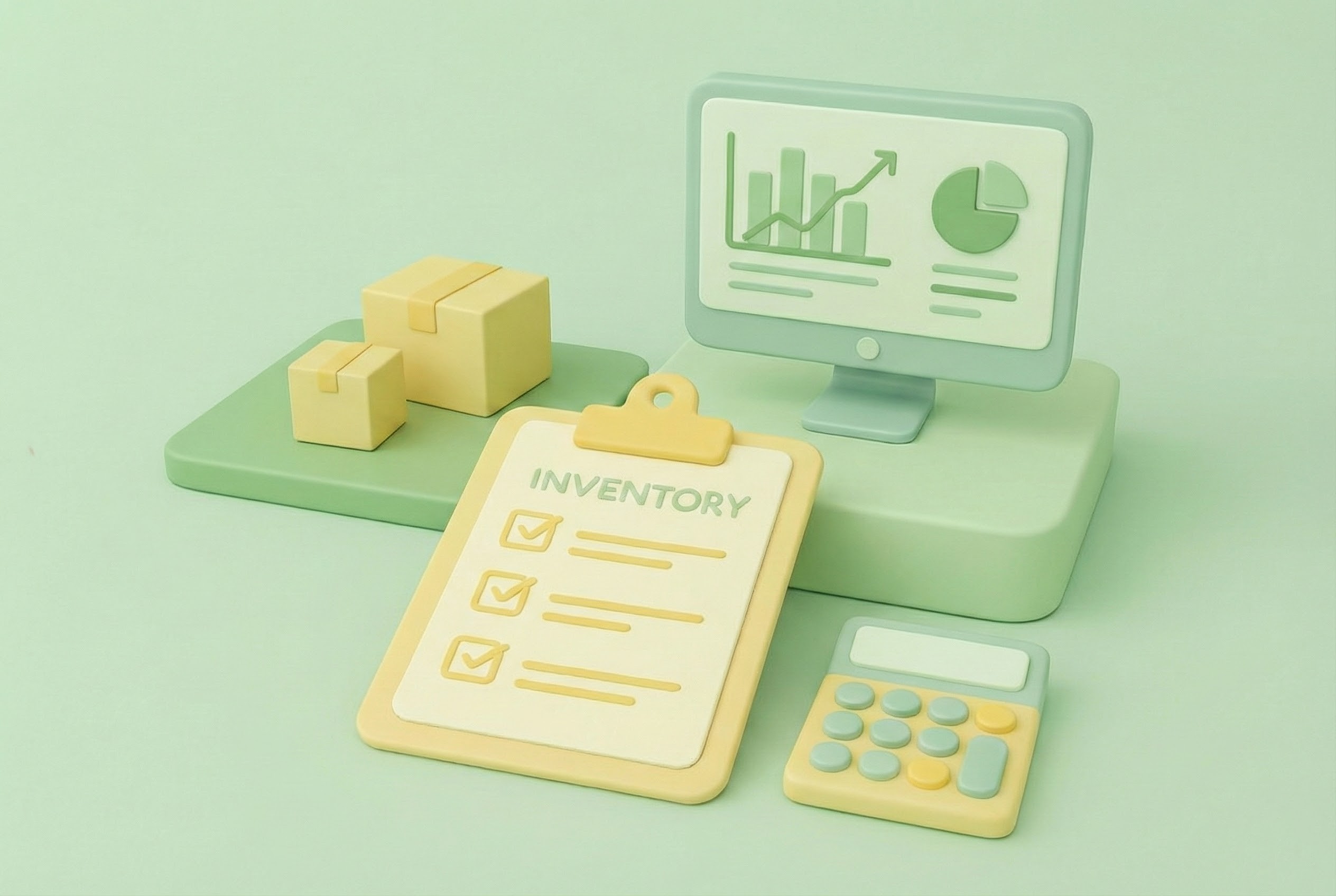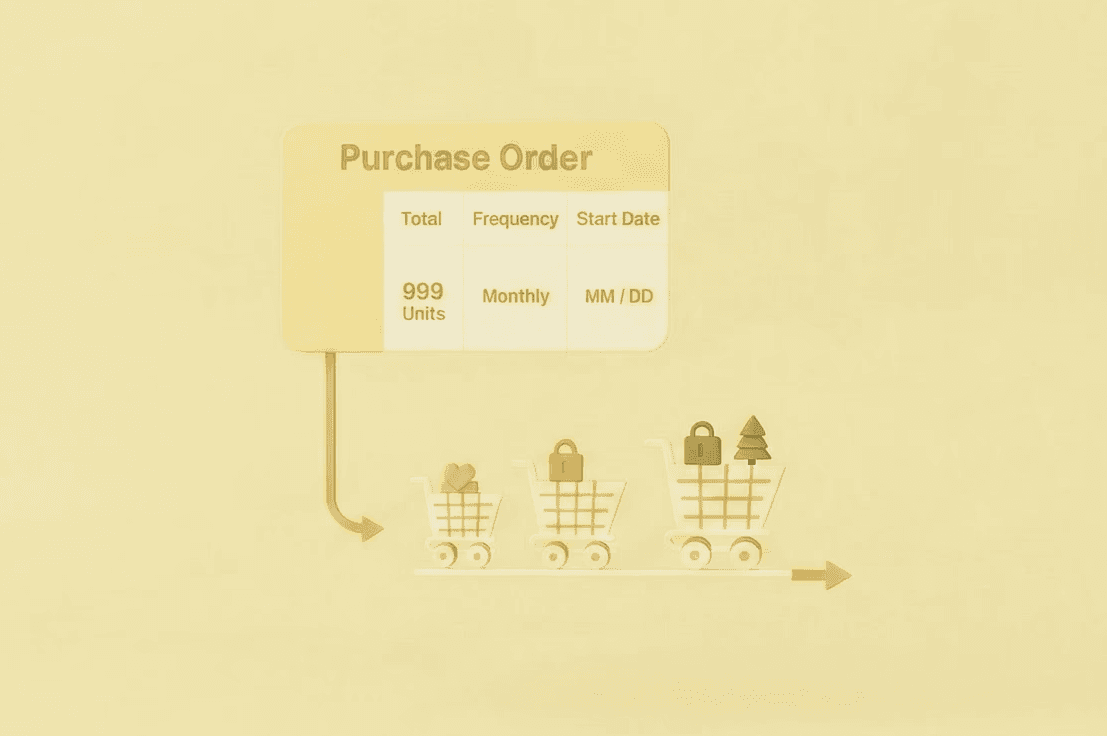Blog
Educational
Forecast Smarter: Best Inventory Software for Predicting Demand in 2025
Forecast Smarter: Best Inventory Software for Predicting Demand in 2025
Laura B
Marketing Analyst
Oct 17, 2025
Why forecasting accuracy matters more than ever — and how to turn it into action
The best forecasting approach is the one that stays predictably accurate and turns that accuracy into repeatable action across every Shopify location you sell or ship from. That means per-SKU, per-location forecasts that feed ranked replenishment, approval-ready POs, smart transfers, and honest cart/PDP ETA promises. Shopify treats a “location” as any place or app where you stock or fulfill, so your planning stack must respect that model to avoid oversells, missed promises, and wasted cash.
How to convert accuracy into impact (practical checklist)
• Produce per-location forecasts and surface a ranked buy list by revenue impact.
• Auto-generate supplier-ready POs (with a weekly budget guardrail) so buying actually happens.
• Drive transfers automatically when proximity wins over new buys, and expose real ETA windows to cart/PDP.
• Measure the loop: stockout sessions, PO cycle time, transfer success rate, and cash tied in aging inventory — then iterate weekly.
The human version: accuracy isn’t perfection—it’s predictable precision tied to decisions
Forecasting isn’t magic; it’s math meeting your real-world mess. A solid system layers time-series modeling for stable SKUs with causal drivers like promotions and seasonality, then adapts when patterns shift. When accuracy is high and explainable, people trust it. When it’s opaque or brittle, teams go back to gut feel—and gut feel doesn’t scale.
Why this matters now: Minor errors compound when you operate multiple nodes (DCs, stores, 3PLs). A small bias becomes a stockout in Miami and excess stock in Denver. Shopify’s multi-location model is explicit: track inventory per location and fulfill accordingly. Your forecasts, safety stock, and purchase logic have to be location-aware, or your PDP/cart promises will drift from reality.
What “accuracy” really means (and how to measure it without fooling yourself)
If you’ve relied on MAPE—the average of each item’s percent error—you’ve seen how low-volume SKUs can skew it. That’s why many operators use WAPE—total absolute error divided by total actual sales, so bigger sellers count more—a scale-free error that aggregates before dividing, so it behaves better when you have lots of small or zero values (hello, retail). Track bias too (are you systematically high or low?), and watch service level because it’s what customers feel: the probability you fulfill demand without a stockout. (Rob J Hyndman)
There’s hard evidence that better forecast accuracy improves inventory performance and service levels. Academic and industry work consistently ties accuracy to cost, fill rate, and cash. The punchline: accuracy pays for itself when it feeds decisions fast.
Accuracy is only useful if it moves inventory
Great forecasts that sit in a dashboard don’t help. The value shows up when the numbers drive:
A ranked buy list for each location that’s easy to approve.
Approval-ready POs with MOQs, case packs, price breaks, and lead-time profiles already honored.
Transfers when moving existing stock beats buying new.
PO-driven ETAs on PDP/cart so customers see “Ships by Nov 7–10”, not “Out of stock.” Community guidance and merchant threads show how per-location availability helps set honest expectations.
To turn accuracy into revenue, your tool must forecast by location, prioritize what to buy or move next, generate supplier-ready POs, and publish ship windows from inbound POs.
Where Tightly fits among the tools you actually compare
Tightly is an AI inventory multichannel OS built for scaling brands. The design principle is simple: accuracy is only useful if it becomes execution—automatically and transparently.
Explainable AI forecasting, per location. See drivers (trend, seasonality, promo effects) and confidence bands so finance, ops, and buyers trust the numbers.
Ranked SKU replenishment. One list that shows days-to-stockout.
Approval-ready POs. Supplier MOQs, case packs, price breaks, and lead-time profiles are baked in; line-level diffs and approvals keep audits clean.
Transfer recommendations. Move stock between nodes when it’s faster/cheaper than buying new.
PO-driven ETAs on PDP/cart. Keep selling with honest “Ships by Nov 7–10” windows, backed by inbound POs—not vibes.
Always learning. As real sales/receipts hit, the model updates, bias shrinks, and your loop gets tighter.
Competitor Snapshot
Platform | Core angle (at a glance) | Where it tends to fit |
|---|---|---|
Inventory Planner | Shopify-friendly replenishment & forecasting | DTC/Shopify merchants wanting fast planning workflows |
Netstock | ERP-anchored forecasting/optimization | Teams running inventory from an ERP who need a planning layer |
Slimstock (Slim4) | End-to-end supply planning & IBP depth | Complex enterprises with broad supply requirements |
Katana (KatanaMRP) | Inventory + light manufacturing + Shopify | Brands with kitting/assembly and Shopify front ends |
Odoo | Modular ERP with inventory + connectors | Orgs centralizing ops on Odoo; Shopify via apps/partners |
Onebeat | Retail optimization + transfers/allocations | Store networks focused on smart transfers & store-level ops |
EazyStock | Optimization layer for multi-warehouse | Mid-market/ERP-centric ops seeking forecasting + policy |
Singuli | AI forecasting + PO planning via connector | Data-forward DTC teams that want ML models + Shopify sync |
A realistic evaluation path
Start by cleaning the basics: consistent SKUs/variants, units, and returns logic. If you run stores and warehouses, name each location’s job: who promises PDP/cart inventory, who feeds whom via transfers, and which nodes are “dark” (feeder only). Shopify lets you manage inventory per location; use it.
Then run a 90-day pilot on your top SKUs. In the first month, stress-test the forecast on a handful of heroes and slow movers. In month two, approve weekly POs from the ranked list with a budget cap. In month three, turn on backorders with PO-driven ETA windows; track conversion and cancellations. If accuracy is real, you’ll see stockout sessions drop, PO cycle time shrink, and revenue saved from captured backorders.
FAQs
Why do my forecasts look fine, but we still stock out?
Location blindness. You planned globally, but ship from distinct Shopify locations with different lead times and buffers. Forecast per location and connect the output to POs and transfers.
Will an accurate forecast reduce cash tied up in slow movers?
Yes—if you couple accuracy with budget-aware replenishment and aging watchlists. Research shows improvements in forecast accuracy correlate with better inventory cost profiles and service.
How often should we update forecasts?
Weekly is a healthy baseline; daily during peak or volatile inbound. The key isn’t refresh rate alone—it’s whether POs and ETAs update just as fast.
Can we show customers which store actually has stock?
Yes. Many merchants expose per-location availability on the product page via apps or custom Liquid/Functions. It boosts trust and steers pickup/ship-from-store correctly.
Laura B
Marketing Analyst
Share






